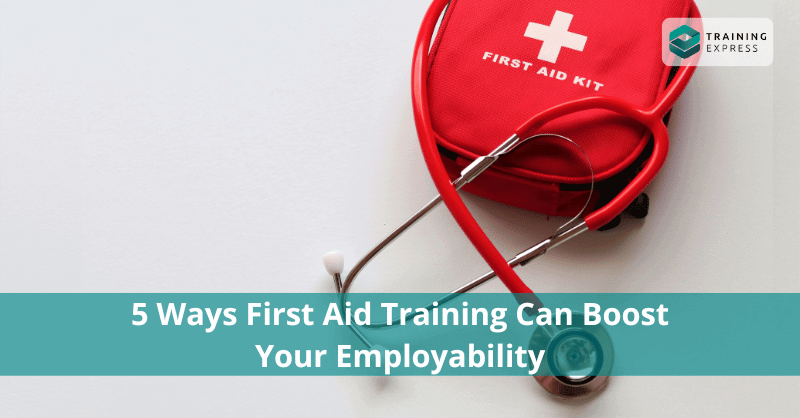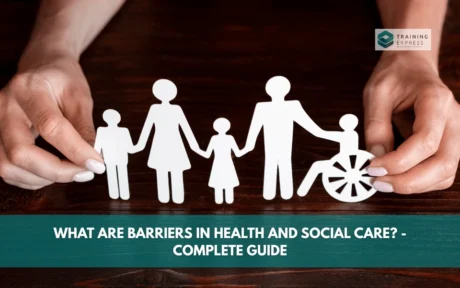3. First Aid Training Boosts Your Confidence
Learning any new skill can significantly improve your confidence. For first aid training, the confidence boost comes from the ability to provide lifesaving treatment to an ailing or injured individual.
Your effectiveness as a trained first aider lies in your capacity to think critically and act quickly and decisively. These qualities are valuable in lifesaving practices and other areas of life, particularly your career. For example, critical thinking, sound decision-making, and efficiency can help you excel at any task assigned to you, which works in your favour while seeking employment.
4. First Aid Training Can Be A Gateway To A Healthcare Career
Many people desire a career in the healthcare sector, but only some are suited for this field. Establishing whether it’s something you’re passionate about earlier on can significantly boost your employability.
One way to accomplish this is to undergo first aid training. Doing so will give you insight into what it means to care for a sick person or save a life. By the end of the training, you’ll have determined whether you still want to become a healthcare practitioner.
More importantly, first aid training is required for most jobs in the world of healthcare. As such, being a certified first aider makes you a better fit for careers in this field.
5. First Aid Training Can Increase Your Chances Of Being Promoted
First aid training is as essential when seeking a job promotion as it is when seeking employment. For example, if your company is looking to promote someone and can’t decide between two candidates, they’ll likely consider additional skills to finalise their decision.
First aid skills are among the abilities that’ll give you the upper hand. In addition, they expose you to a wider range of promotion opportunities, especially in cases where first aid training is required.
Based on these reasons, first aid training is an area worth exploring. Not only will you be able to save lives, but you’ll also become the ideal candidate for many of the jobs you seek.
Essential Skills Learned During First Aid Training
First aid training equips you with several basic skills to help you provide medical assistance to ill or injured individuals before qualified medical personnel can treat them. These include the following:
a. Giving CPR (Cardiopulmonary Resuscitation)
CPR is the most critical first aid skill to learn as administering it enables you to save a life. Over the years, it’s evolved from breathing assistance and chest compressions to the latter alone.
Administering chest compressions is a hands-only technique that aims to provide artificial ventilation. Consequently, it enhances breathing and blood circulation in the injured person and preserves brain function.
b. Identifying Anaphylaxis And Administering Adrenaline Injections
Certain foods, chemical positioning, and animal bites can lead to severe allergic reactions, such as
anaphylaxis, in some individuals. As a trained first-aider, it’s your responsibility to identify the signs and know the treatment that should be administered.
Anaphylaxis can be fatal if left untreated; therefore, acting as quickly as possible is advisable. The recommended treatment for severe allergic reactions is an adrenaline injection administered via an Epipen. It’s also crucial that you’re aware of the required doses for various allergic reactions to facilitate successful outcomes.
c. Managing Bleeding
Some injuries can cause excessive blood loss, leading to loss of life. Having the necessary first aid training can help you save a life in such a situation. It teaches you proper pressure application using bandages or a tourniquet in extreme cases. Managing bleeding ensures that the injured person stays conscious until medical personnel arrives.
d. Treating Burns
Treating burns is another crucial first aid skill. Severe cases can be infected easily, increasing the pain intensity for the injured party.
In addition, each burn degree requires a unique treatment. For example, first-degree burns aren’t as severe and can be remedied using a topical ointment and loose gauze.
Blistered skin and minimal swelling characterise second-degree burns. Managing them requires you to run cool water on the affected area. Once this is done, you’re expected to apply a topical ointment and loose gauze.
For third-degree burns, the skin whitens, blisters, and the affected areas become numb. Treating them should be left to professionals to minimise infections. Therefore, contact emergency medical services immediately if you suspect someone has experienced third-degree burns.
e. Making A Splint
The pain from a broken bone can be quite intense and debilitating. Part of first aid training entails learning how to make a splint and attach it to the injured individual. Most first aid kits have splint rolls that you can use to make one. Alternatively, you can use everyday materials at home or the office.
Making a splint means immobilising the broken bone to lessen the pain and prevent the injury from worsening. It’s advisable to avoid moving the injured party until the splint has been attached.
f. Dressing A Wound
Dressing is the quickest way to heal an injury. First aid training teaches you how to clean a wound effectively to minimise infections. You learn how to dress the wound using various medical supplies, including bandages, gauze, lint, and plasters.
g. Performing Abdominal Thrusts
Abdominal thrusts, also called the Heimlich Maneuver, are an emergency technique designed to help an individual who’s choking. Studies indicate that people can suffer brain damage if their airways are obstructed for longer than five minutes.
However, abdominal thrusts aren’t recommended if the person can breathe on their own, cough, or speak. This is because the procedure may lead to broken ribs or abdominal complications, such as holes in the gastrointestinal tract. As such, it should only be performed in a life-threatening situation.
First aid training lets you learn the signs of choking to make them easy to identify. It also equips you with the knowledge and skills necessary to perform if someone chokes in your presence.
h. Identifying A Concussion
Concussions are life-threatening injuries that occur after someone bumps their head on a hard surface. Signs include pupil dilation, dizziness, and incoherence. If left unmanaged, concussions can lead to brain damage. As such, first-aiders need to learn the manifestations for easy identification.
i. Managing Heatstroke
Heatstroke occurs when one’s body overheats after intense physical exertion or prolonged exposure to high temperatures. It’s caused by the body’s inability to cool itself, causing a rapid increase in the body’s temperature. An individual suffering from heatstroke can have a temperature of 106 degrees Fahrenheit within minutes. If left unmanaged, it can cause organ damage or even death.
First aid training teaches you to act fast when someone is experiencing heatstroke, and no medical personnel is available. Cold water immersion is the most recommended first aid solution. A wet cloth or ice pack can also help cool down the person’s body before paramedics arrive.
j. Managing Seizures
Seizures are a relatively common condition triggered by a closed head injury, infection, stroke, and other unknown causes. Symptoms of seizures include:
- A staring spell
- Loss of awareness or consciousness
- Temporary confusion
- Uncontrollable jerking of the arms and legs
When someone experiences a seizure, please remove harmful objects and cushion their head to avoid injury. It’s also advisable to avoid holding them still, moving, or feeding them until the seizures have stopped completely. Afterwards, you should ensure they’re in a recovery position and breathing steadily.
Learning these techniques enables you to minimise the severity of injuries and hasten their recovery. These skills are the reason first aid training improves your employability in the market.
Summing Up
First aid training is crucial for many reasons, including its ability to boost your employability. These include exemplifying your dedication to self-improvement, boosting your confidence, and increasing your chances of promotion. Additionally, it gives you a competitive edge and makes it possible to pursue a career in healthcare. More notably, first aid training is a highly sought-after transferable skill as it encompasses leadership, empathy, and problem-solving, among others.
During first aid training, some basic skills you learn include CPR, identifying anaphylaxis and administering adrenaline injections, and managing bleeding, heatstroke, and seizures. It also teaches you to identify concussions, dress wounds, perform abdominal thrusts, make a splint, and treat burns. These skills are the reason first aid training enhances your employability in the market.
The great thing about pursuing first aid training is the numerous
online courses available at your disposal.

 Food Hygiene
Food Hygiene Health & Safety
Health & Safety Safeguarding
Safeguarding First Aid
First Aid Business Skills
Business Skills Personal Development
Personal Development






